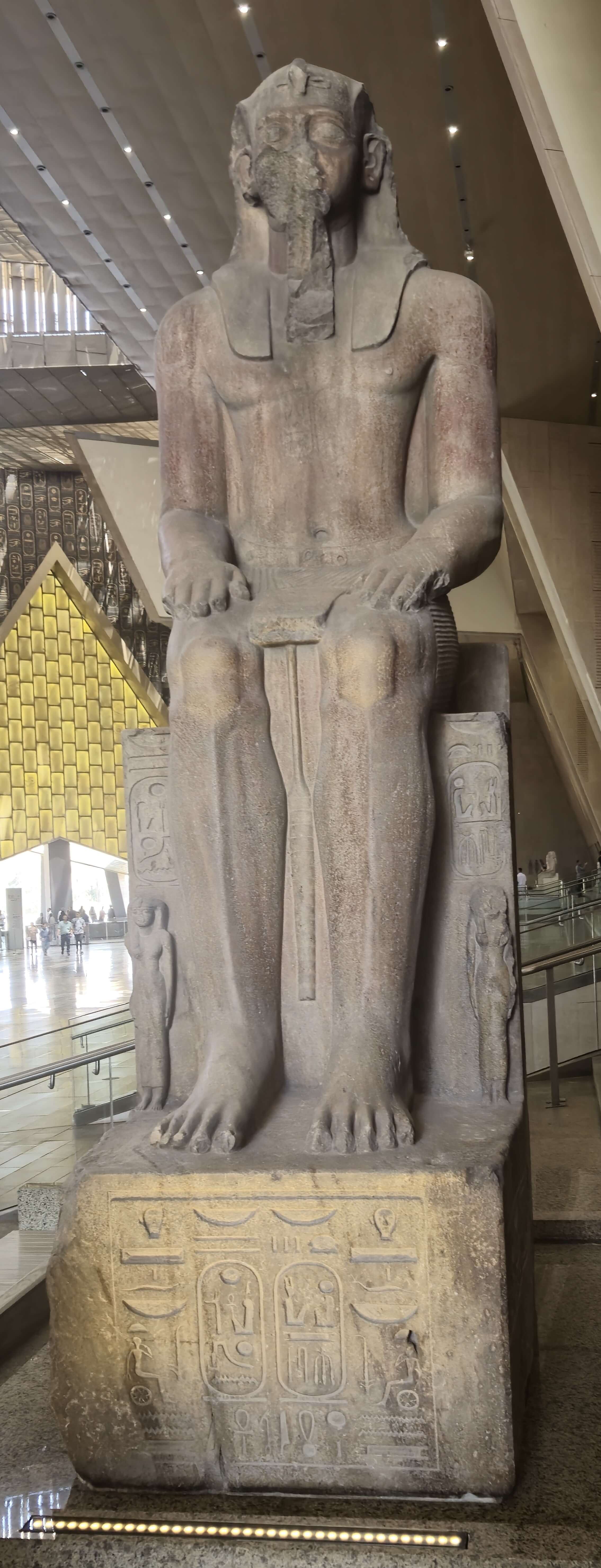
GEM 45807
Colossal statue of a Middle Kingdom King
In the heart of Middle Kingdom Egypt, during the 12th Dynasty (circa 1985–1773 BCE), colossal statues like the one discovered at Herakleopolis Magna were crafted to project the divine authority of pharaohs such as Senwosret III—or possibly even his predecessor, Senwosret II. These kings reigned during one of the most culturally rich and politically centralized periods in ancient Egyptian history.
This particular statue, carved from hard stone and once standing as a pair, likely depicted a Middle Kingdom king accompanied by two princesses, whose figures were shown near the king’s legs. While the exact identity remains uncertain, scholars propose it could be either Senwosret III, known for his stern, deeply expressive statues, or Amenemhat IV, whose reign is less understood due to a lack of records. Although we don’t know whether Amenemhat IV had children, Senwosret III is known to have had three wives and at least five daughters. Interestingly, the statue was later reinscribed during the Ramesside Period, possibly under Merneptah—son of Ramses II—which was a comm ... اكتشف المزيد مع البريميوم!
اكتشف القصة الكاملة لهذا الأثرقم بالترقية للبريميوم للوصول إلى الوصف الكامل، الأدلة الصوتية، والمحتوى الحصري لجميع القطع الأثرية.استمتع بالوصول الكامل إلى الصوت والوصف لأهم القطع الأثرية في المتحف الكبير بسعر 1.99 دولار
تبحث عن قطعة أثرية أخرى؟